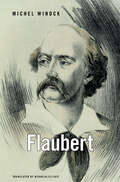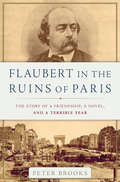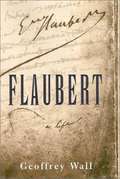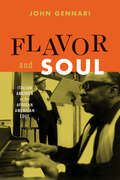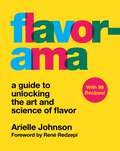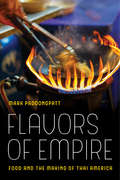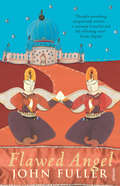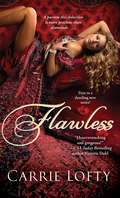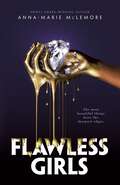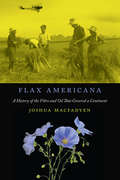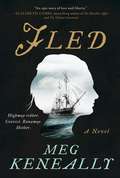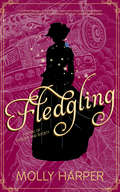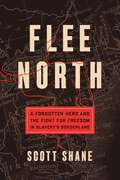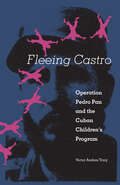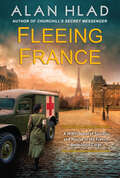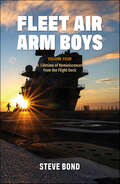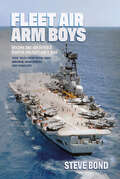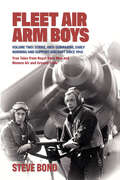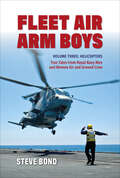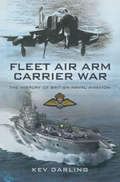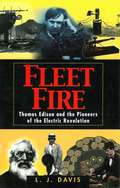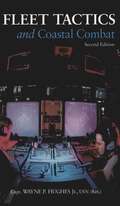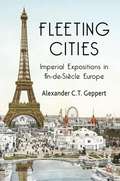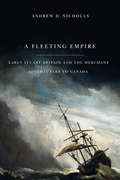- Table View
- List View
Flaubert
by Michel WinockA “well-researched, elegantly written” study of the life and work of 19th-century French author Gustave Flaubert (Roger Pearson, University of Oxford).Michel Winock’s biography situates Gustave Flaubert’s life and work in France’s century of great democratic transition. Flaubert did not welcome the egalitarian society predicted by Tocqueville. Wary of the masses, he rejected the universal male suffrage hard won by the Revolution of 1848, and he was exasperated by the nascent socialism that promoted the collective to the detriment of the individual. But above all, he hated the bourgeoisie. Vulgar, ignorant, obsessed with material comforts, impervious to beauty, the French middle class embodied for Flaubert every vice of the democratic age. His loathing became a fixation—and a source of literary inspiration.Flaubert depicts a man whose personality, habits, and thought are a stew of paradoxes. The author of Madame Bovary and Sentimental Education spent his life inseparably bound to solitude and melancholy, yet he enjoyed periodic escapes from his “hole” in Croisset to pursue a variety of pleasures: fervent friendships, society soirées, and a whirlwind of literary and romantic encounters. He prided himself on the impersonality of his writing, but he did not hesitate to use material from his own life in his fiction. Nowhere are Flaubert’s contradictions more evident than in his politics. An enemy of power who held no nostalgia for the monarchy or the church, he was nonetheless hostile to collectivist utopias.Despite declarations of the timelessness and sacredness of Art, Flaubert could not transcend the era he abominated. Rejecting the modern world, he paradoxically became its celebrated chronicler and the most modern writer of his time.Praise for Flaubert“This generous study ingeniously builds a narrative around Flaubert’s own words—from not only the novels but also voluminous correspondence and unpublished work. Adding light background and analysis, Winock allows the mind of the Master to shine.” —The New Yorker“It is precisely the historical background of Flaubert’s times, both its conscious and its invisible impingements on the writer’s sensibility, on which Winock is especially revelatory . . . Michel Winock has written a compelling and stylish biography, and Nicholas Elliott has brought it into English with flair and skill.” —Bruce Whiteman, Hudson Review“Noted French historian Winock’s biography succeeds in presenting a fresh portrait of a man plagued by paradoxes . . . Winock provides absorbing background related to the country’s social and political scenes that occurred during his subject’s lifetime.” —Erica Swenson Danowitz, Library Journal
Flaubert in the Ruins of Paris: The Story of a Friendship, a Novel, and a Terrible Year
by Peter BrooksFrom the summer of 1870 through the spring of 1871, France suffered a humiliating defeat in its war against Prussia and witnessed bloody class warfare that culminated in the crushing of the Paris Commune. In Flaubert in the Ruins of Paris, Peter Brooks examines why Flaubert thought his recently published novel, Sentimental Education, was prophetic of the upheavals in France during this "terrible year," and how Flaubert's life and that of his compatriots were changed forever.Brooks uses letters between Flaubert and his novelist friend and confidante George Sand to tell the story of Flaubert and his work, exploring his political commitments and his understanding of war, occupation, insurrection, and bloody political repression. Interweaving history, art history, and literary criticism-from Flaubert's magnificent novel of historical despair, to the building of the reactionary monument the Sacré-Coeur on Paris's highest summit, to the emergence of photography as historical witness-Brooks sheds new light on the pivotal moment when France redefined herself for the modern world.
Flaubert: A Life
by Geoffrey WallHow is it that Flaubert, the great nineteenth-century novelist and last of the great French romantics, still seems so very modern? In this biography, Geoffrey Wall investigates why not only Madame Bovary but its author exerts such a firm hold on the popular literary imagination.
Flavor and Soul: Italian America at Its African American Edge
by John GennariIn the United States, African American and Italian cultures have been intertwined for more than a hundred years. From as early as nineteenth-century African American opera star Thomas Bowers—“The Colored Mario”—all the way to hip-hop entrepreneur Puff Daddy dubbing himself “the Black Sinatra,” the affinity between black and Italian cultures runs deep and wide. Once you start looking, you’ll find these connections everywhere. Sinatra croons bel canto over the limousine swing of the Count Basie band. Snoop Dogg deftly tosses off the line “I’m Lucky Luciano ’bout to sing soprano.” Like the Brooklyn pizzeria and candy store in Spike Lee’s Do the Right Thing and Jungle Fever, or the basketball sidelines where Italian American coaches Rick Pitino and John Calipari mix it up with their African American players, black/Italian connections are a thing to behold—and to investigate. In Flavor and Soul, John Gennari spotlights this affinity, calling it “the edge”—now smooth, sometimes serrated—between Italian American and African American culture. He argues that the edge is a space of mutual emulation and suspicion, a joyous cultural meeting sometimes darkened by violent collision. Through studies of music and sound, film and media, sports and foodways, Gennari shows how an Afro-Italian sensibility has nourished and vitalized American culture writ large, even as Italian Americans and African Americans have fought each other for urban space, recognition of overlapping histories of suffering and exclusion, and political and personal rispetto. Thus, Flavor and Soul is a cultural contact zone—a piazza where people express deep feelings of joy and pleasure, wariness and distrust, amity and enmity. And it is only at such cultural edges, Gennari argues, that America can come to truly understand its racial and ethnic dynamics.
Flavorama: A Guide to Unlocking the Art and Science of Flavor
by Arielle JohnsonAn irreverent, accessible, essential guide to the science of flavor and how to use it in your own kitchen, from the food scientist-confidante of some of the world’s best chefs, Arielle Johnson, with more than 75 recipes—plus a foreword by René Redzepi. “Arielle changed the way that I think about flavor, and in these pages, she will do the same for you” (René Redzepi, chef of Noma).Meet Arielle Johnson—she’s a flavor scientist (she loves flavor so much, she got a Ph.D. in the subject). She spends most of her time helping chefs better understand what’s going on beneath the hood of flavor and make delicious new foods. Now, with Flavorama, she shares this invaluable knowledge with home cooks everywhere. Mixing equal parts fun and braininess, Arielle dives into how chemistry, sensation, and craft unite to create flavor, distilling what flavor really is (molecules!) and how to get it to work for you (spotting patterns, breaking rules) in an easy-to-digest handbook.You don’t need a lab or a professional kitchen—or even a background in science—to get something out of the science of flavor. With Flavorama, you’ll be able to easily finesse flavor while cooking to give any dish a little oomph, easily swap out an ingredient for one you have on hand, use a recipe or technique to improvise something new, or boldly replicate a flavor. Out of basil for pesto? Pivot and use mint, shiso, or tarragon—all are members of the same “herbal-aromatic” flavor family—for a new-but-somehow-familiar herb sauce. Or add a drizzle of olive oil and a sprinkling of flaky salt to chocolate ice cream— a simple hack for deliciously complex flavor. Included are 99 recipes so you can hit the ground running with your new science-of-flavor knowledge: An Algorithm for a Minimalist but Excellent Dressing for LettuceUmami-Boosted Cacio e PepeChilled Soba Noodles with GrapefruitThe Meatiest Slow-Cooked MeatPanela-Coconut Iced CoffeePineapple Caramel SauceBurnt Scallion ButterUnder-appreciated–Spice Pumpkin PieCook with the creativity, confidence, and flexibility of a world-class chef and learn how to unlock the flavor potential of your ingredients, create your own dishes, make your own bitters, ferment your own miso, and much, much more. Charming illustrations and diagrams drawn by Arielle herself accompany this indispensable guidebook to flavor town.
Flavors of Empire: Food and the Making of Thai America
by Mark PadoongpattWith a uniquely balanced combination of salty, sweet, sour, and spicy flavors, Thai food burst onto Los Angeles’s and America’s culinary scene in the 1980s. Flavors of Empire examines the rise of Thai food and the way it shaped the racial and ethnic contours of Thai American identity and community. Full of vivid oral histories and new archival material, this book explores the factors that made foodways central to the Thai American experience. Starting with American Cold War intervention in Thailand, Mark Padoongpatt traces how informal empire allowed U.S. citizens to discover Thai cuisine abroad and introduce it inside the United States. When Thais arrived in Los Angeles, they reinvented and repackaged Thai food in various ways to meet the rising popularity of the cuisine in urban and suburban spaces. Padoongpatt opens up the history and politics of Thai food for the first time, all while demonstrating how race emerges in seemingly mundane and unexpected places.
Flawed Angel
by John FullerOnce upon a time in a Middle Eastern land, a fat, sweet-natured little boy grows up as the son of an important ruler. His older brother was apparently still-born and so he is the heir to his father's kingdom. But far away from the royal palace a lonely prospector happens across a wild creature, half boy, half animal, roaming the forests. Eventually this strange child's adventures lead him to the capital and into the path of a platoon of deserters from Napoleon's army - the flashy, ultimately dangerous, face of Enlightenment thought in this isolated kingdom - with drastic consequences. With original poems embedded like gems in the text, this is a fable for all ages, full of shivers and delights, sadness and wonder.
Flawless
by Carrie LoftySir William Christie, ruthless tycoon and notorious ladies' man, is dead. Now his four grown children have gathered for the reading of his will. What lies in store for stepsiblings Vivienne, Alexander, and twins Gareth and Gwyneth? Stunning challenges that will test their fortitude across a royal empire . . . and lead them to the marvelously passionate adventures of their lives. Lady Vivienne Bancroft fled England for New York, hoping to shed the confines of her arranged marriage to unrepentant rogue Miles Durham, Viscount Bancroft--though she never forgot the fiery desire he unleashed with his slightest touch. And when the gambling man arrives on her doorstep for a little sensual revenge for her desertion, he is met with Vivienne's dilemma: She must earn her father's inheritance by profitably running a diamond business worth millions in colonial South Africa. Swept together in an exotic undertaking filled with heated passion and hungry temptation, will Vivienne and Miles discover that the marriage vows they once made are the greatest snare--or the most treasured reward?
Flawless
by Carrie LoftySir William Christie, ruthless tycoon and notorious ladies' man, is dead. Now his four grown children have gathered for the reading of his will. What lies in store for stepsiblings Vivienne, Alexander, and twins Gareth and Gwyneth? Stunning challenges that will test their fortitude across a royal empire . . . and lead them to the marvelously passionate adventures of their lives. Lady Vivienne Bancroft fled England for New York, hoping to shed the confines of her arranged marriage to unrepentant rogue Miles Durham, Viscount Bancroft--though she never forgot the fiery desire he unleashed with his slightest touch. And when the gambling man arrives on her doorstep for a little sensual revenge for her desertion, he is met with Vivienne's dilemma: She must earn her father's inheritance by profitably running a diamond business worth millions in colonial South Africa. Swept together in an exotic undertaking filled with heated passion and hungry temptation, will Vivienne and Miles discover that the marriage vows they once made are the greatest snare--or the most treasured reward?
Flawless Girls
by Anna-Marie McLemoreThe Soler sisters are infamous in polite society—brazen, rebellious, and raised by their fashionable grandmother who couldn’t care less about which fork goes where. But their grandmother also knows the standards that two Latina young ladies will be held to, so she secures them two coveted places at the Alarie House, a prominent finishing school that turns out first ladies, princesses, and socialites.Younger sister Isla is back home within a day. She refuses to become one of the eerily sweet Alarie girls in their prim white dresses. Older sister Renata stays. When she returns months later, she’s unfailingly pleasant, unnervingly polite, and, Isla discovers, possibly murderous. And the same night she returns home, she vanishes.As their grandmother uses every connection she has to find Renata, Isla re-enrolls, intent on finding out what happened to her sister. But the Alarie House is as exacting as it is opulent. It won’t give up its secrets easily, and neither will a mysterious, conniving girl who’s either controlling the house, or carrying out its deadly orders.Tautly written, tense, and evocative, this is a stunning YA novel by award-winning and critically acclaimed author Anna-Marie McLemore.
Flax Americana: A History of the Fibre and Oil That Covered a Continent (McGill-Queen's Rural, Wildland, and Resource Studies #10)
by Joshua MacFadyenFarmers feed cities, but starting in the nineteenth century they painted them too. Flax from Canada and the northern United States produced fibre for textiles and linseed oil for paint – critical commodities in a century when wars were fought over fibre and when increased urbanization demanded expanded paint markets. Flax Americana re-examines the changing relationships between farmers, urban consumers, and the land through a narrative of Canada’s first and most important industrial crop. <p><p> Initially a specialty crop grown by Mennonites and other communities on contracts for small-town mill complexes, flax became big business in the late nineteenth century as multinational linseed oil companies quickly displaced rural mills. Flax cultivation spread across the northern plains and prairies, particularly along the edges of dryland settlement, and then into similar ecosystems in South America’s Pampas. <p> Joshua MacFadyen’s detailed examination of archival records reveals the complexity of a global commodity and its impact on the eastern Great Lakes and northern Great Plains. He demonstrates how international networks of scientists, businesses, and regulators attempted to predict and control the crop’s frontier geography, how evolving consumer concerns about product quality and safety shaped the market and its regulations, and how the nature of each region encouraged some forms of business and limited others. <p> The northern flax industry emerged because of border-crossing communities. By following the plant across countries and over time Flax Americana sheds new light on the ways that commodities, frontiers, and industrial capitalism shaped the modern world.
Fled: A Novel
by Meg KeneallyBased on the life of an incredible historical heroine, a harrowing journey in search of love, justice, and freedom, told by the daughter of best-selling author Thomas Keneally (Schindler's List) Jenny Gwyn has proven herself a survivor. Faced with destitution after the death of her father, she toughens her skin to become a highwaywoman in order to support her impoverished family. But one fatal mistake leads to her arrest, and the king’s justice demands her death. Rather than beg for mercy, Jenny condemns the system that would have her choose between obeying the law and dying, and breaking it for a chance to live. Her ferocity convinces the judge to spare her life, sentencing her and dozens of other convicts to a transport across the world to help settle England's newest colony in Australia. After being contained on a filthy ship and selling her body for protection, Jenny is horrified to learn that her struggles have only just begun. The harsh landscape of Sydney Cove isn't welcoming to its new settlers with its arid climate and precious little fresh water, and despite the lack of shackles or bars, she and the others are still prisoners under the strict watch of Governor Edward Lockharty, and no amount of cunning can earn his favor. Jenny refuses to submit to the governor or to the barren land unable to support the growing population. Determined to find a better life for herself and her children, she braves the sea, and a journey of over three thousand miles in a small rowboat, for a chance at a future worth fighting for. Based on the true story of Mary Bryant, an iconic figure in the foundation lore of Australia as Great Britain's penal colony, Fled is a sweeping, heart-wrenching account of one woman's life-long search for freedom.
Fledgling (Sorcery and Society #2)
by Molly Harper“Molly Harper’s Changeling is masterful fantasy—a spunky Cinderella story with a heroine who’s equal parts compassion, determination, and pure magical delight.” —Rachel Vincent, author of the Soul Screamers series and The Stars Never Rise, on ChangelingDays away from becoming completing her first year at Miss Castwell’s Institute for the Magical Instruction of Young Ladies, Changeling-born Sarah Smith might just get away with posing as an upper-class Guardian girl named Cassandra Reed.But strange visions of a Lightbourne destroyed by Miss Morton’s revenant army keep Sarah from enjoying her achievement. Plus, the Mother Book, Sarah’s one secret advantage and the ultimate entrée in Guardian society, suddenly stops revealing itself to her…putting her in a precarious position with the Guild. On top of all that, her former lady’s maid left Miss Castwell’s, and the new hire is, well, taking some getting used to.If it weren’t for her two best friends, Alicia McCray and Ivy Cowel, who will do anything to protect her secret, Sarah doesn’t know if she’ll make it another year. When the three girls take summer holiday with Alicia’s family (chaperoned by an exacting and very disapproving Mrs. McCray), a relaxing vacation in Scotland is the last thing they’ll find.Mrs. Winter is thrilled that Sarah is spending time with the influential McCray family, but Sarah can’t help but feel that her real purpose is to find other Changeling children like her, and free them to realize their own magic. Can she find genuine satisfaction in her accomplishments when she knows there are others like her out there who need her help? Will the three girls uncover the deeply-held secrets they’re looking for in the mysterious mountains of Scotland? Will the Mother Book finally start talking to her again? And will Sarah come to understand the importance of her connection with Ivy and Alicia, and the true nature of her own power…before it’s too late?“Witty and classic, Changeling had everything I wanted from a coming of age story: friendship, scandal, and a heroine learning to flex her magical muscles. If you liked Harry Potter, you will love CHANGELING!” —Kristen Simmons, critically acclaimed author of the Article 5 series, on Changeling
Flee North: A Forgotten Hero and the Fight for Freedom in Slavery's Borderland
by Scott ShaneA riveting account of the extraordinary abolitionist, liberator, and writer Thomas Smallwood, who bought his own freedom, led hundreds out of slavery, and named the underground railroad, from Pulitzer Prize-winning author and journalist, Scott Shane. Flee North tells the story for the first time of an American hero all but lost to history.Born into slavery, by the 1840s Thomas Smallwood was free, self-educated, and working as a shoemaker a short walk from the U.S. Capitol. He recruited a young white activist, Charles Torrey, and together they began to organize mass escapes from Washington, Baltimore, and surrounding counties to freedom in the north.They were racing against an implacable enemy: men like Hope Slatter, the region’s leading slave trader, part of a lucrative industry that would tear one million enslaved people from their families and sell them to the brutal cotton and sugar plantations of the deep south.Men, women, and children in imminent danger of being sold south turned to Smallwood, who risked his own freedom to battle what he called “the most inhuman system that ever blackened the pages of history.” And he documented the escapes in satirical newspaper columns, mocking the slaveholders, the slave traders and the police who worked for them.At a time when Americans are rediscovering a tragic and cruel history and struggling anew with the legacy of white supremacy, this Flee North -- the first to tell the extraordinary story of Smallwood -- offers complicated heroes, genuine villains, and a powerful narrative set in cities still plagued by shocking racial inequity today.
Fleeing Castro: Operation Pedro Pan and the Cuban Children's Program
by Victor Andres Triay"The first complete and comprehensive work on these important, unique programs. . . . An interesting, humane, yet tragic component of the post-1959 Cuban experience and the Cold War in general."--Antonio Benitez-Rojo, Amherst College "The ordeal began [for the children] when their parents told them they had to travel alone and that they had to keep the upcoming trip a secret. The most powerful parts of the book are their accounts. . . . Through interviews with many of the participants—the children and their parents, the coordinators of the airlift, those in the underground in Cuba and the Catholic sponsors in the United States—Triay attempts to answer many of the questions the exodus raised."--Miami Herald A stirring account of the covert effort to smuggle Cuban children into the United States in the aftermath of Fidel Castro's rise to power, Fleeing Castro brings to light the humanitarian program designed to care for the children once they arrived and the hardship and suffering endured by the families who took part in Operation Pedro Pan. From late 1960 until the October 1962 missile crisis, 14,048 unaccompanied Cuban children left their homeland, the small island suddenly at the center of the Cold War struggle. Their parents, unable to obtain visas to leave Cuba, believed a short separation would be preferable to subjecting their offspring to Castro's totalitarian Marxist state. For the children, the exodus began a prolonged and tragic ordeal--some didn’t see their parents again for years; a few never did. Until now, this chapter of the Cuban Revolution has been relatively obscure. Initially the result of an effort by James Baker, headmaster of an American school in Cuba who worked closely with the anti-Castro underground, Pedro Pan quickly came to involve the Catholic Church in Miami and, in particular, Father Bryan Walsh, who established the Cuban Children's Program, the nationwide organization that cared for those children without relatives or friends in the United States--almost half of them. The latter program, in effect until 1981, was the first to allot federal money to private agencies for child care, an action with far-reaching repercussions for U.S. social policy. Victor Andres Triay traces this story from its political and social origins in Cuba, setting it in the context of the Cold War and describing the roles of the organizations involved in Cuba and in the United States. Making use of extensive interviews with Baker, Walsh, and influential underground figures, as well as personal letters that document the fears and dreams of both the parents and the children, Triay presents this history of Pedro Pan--the largest child refugee movement ever in the Western Hemisphere--with the drama of an international thriller and the pathos of a heartbreaking family drama.
Fleeing France: A WWII Novel of Sacrifice and Rescue in the French Ambulance Service
by Alan HladInspired by real wartime events, including the evacuation of Dunkirk and the sinking of RMS Lancastria—one of the most harrowing disasters in British maritime history—this is a riveting, superbly researched slice of historical fiction, and a timeless story of strength and sacrifice. Will appeal to fans of Beneath a Scarlet Sky and Eternal.France, 1939: A talented singer, Ruth Lacroix has left Maine to live with her aunt and uncle, dreaming of performing at the Casino de Paris. But with the outbreak of war, and the heartbreaking news that her cousin has been killed by German forces, that goal is supplanted by another—to support France in any way she can. Though Ruth has never driven a vehicle larger than the tractor on her parents&’ farm, she joins a friend in enlisting as a driver for the French ambulance corps. On their way to transfer injured soldiers to Dunkirk for evacuation, they encounter Jimmie, a British Royal Air Force pilot with No. 73 Squadron RAF, who has bailed out of his burning plane. As Dunkirk falls, blocking off the route to the northern coast, word spreads of a daring Allied plan to rescue the remaining troops and civilians from ports in western France: code name Operation Aerial. Over two hazardous weeks, Ruth and Jimmie will journey hundreds of miles together, helping other refugees as they rush to reach the sea before they are overtaken by the Germany army. But all their courage and resilience offer no certainty in wartime, when a single stroke of luck, or a split-second decision, can mean the difference between life and death . . .
Fleet Air Arm Boys: A Lifetime of Reminiscences from the Flight Deck
by Steve BondSteve Bond is back with the final volume in this popular series. Unlike his previous three tomes, with their focus on aircraft and rotorcraft, this book is uniquely dedicated to the personnel of the Fleet Air Arm (FAA) themselves. Each chapter will concentrate on the memories of contributors who served in a range of roles, including those below the flight deck. Accounts will focus on the everyday life upon an aircraft carrier as well as the extraordinary challenges faced during operations. There is a fascinating chapter covering exchange services with the RAF and other navies including the French and US; and also insight into the Indian navy’s experience with the Sea Hawk and Sea Harrier. Within the previous volumes, we met some true characters and there is a chapter devoted to people’s memories of them. The closing section entitled ‘Thoughts’ sees contributors reflect on their FAA career with many deeply moving responses and discourses on the future of the service. The book is heavily illustrated throughout in color and black and white with personal photographs from the contributors, artwork and tongue-in-cheek cartoons for which the FAA is famous. Volume Four is the perfect conclusion to the ongoing post-war story of a truly astounding branch of the armed forces.
Fleet Air Arm Boys: Air Defence Fighter Aircraft Since 1945: True Tales from Royal Navy Aircrew, Maintainers and Handlers
by Steve BondA history of the Royal Navy’s FAA since 1945, featuring a survey of the aircraft flown, the conflicts fought, and the daily life of those in service.The RAF’s continuing role in the projection of air power in the defence of the United Kingdom and its overseas interests since the end of the Second World War is well known. However, the same cannot always be said about the Royal Navy’s Fleet Air Arm (FAA), in part due to the ten-year gap between the retirement of the Harrier and the arrival of the F-35B and the Queen Elizabeth-class aircraft carriers.Flying high performance aircraft off a carrier demands not only a high level of skill, but also a considerable amount of courage and determination, not least to land back on a very small piece of real estate bobbing about in a rough sea, often at night, with no possibility of diversion. The nature of these operations has meant that the accident rate and aircrew losses were very high—and accepted as part of the job.With the arrival of the Queen Elizabeth and the Prince of Wales, it is time to redress the balance and bring the FAA’s extraordinary story to the audience it so richly deserves through the words of those air and ground crews who have been part of it since 1945. What emerges is an amazing close-knit esprit de corps, often accompanied by a long-standing and still simmering rivalry between the RAF and the Royal Navy over who should project air power overseas. Enormous respect is shown by the aviators and ships’ senior officers for the aircraft handlers and maintainers, who work long hours in a highly dangerous environment on the flight deck.This first volume looks chronologically at every aircraft type flown in an air defence role since 1945. Involvement in conflicts including Korea, Suez, the Falklands, Bosnia and elsewhere is included, and perforce the cost in human lives, even in everyday operations, frequently emerges. Balancing this are the everyday grind, the good times, the humour, the “runs ashore” and the sense of pride in a job well done. All delivered in the words of the men themselves.
Fleet Air Arm Boys: Strike, Anti-Submarine, Early Warning and Support Aircraft since 1945
by Steve BondSince the end of World War 2 the primary role of the Royal Navy’s Fleet Air Arm has been airborne power projection; the ability rapidly to respond to any trouble spot across the globe and to protect the interests of the United Kingdom and its partner nations. The principal tools in that response were the strike aircraft which took the offensive to the aggressor. Although from 2010 to 2020 fixed-wing carrier aviation was not part of the Fleet Air Arm, with the advent of the navy’s two new aircraft carriers, HMS Queen Elizabeth and HMS Prince of Wales, that capability has been restored. This renewed focus has not only seen the return of flying high performance aircraft from a carrier, but also the regeneration of the necessary skills, and courage, needed to cope with the extremes of weather and the nature of air operations in a very high-risk environment. However the lessons of the past have not been forgotten, and so many of those previous experiences are related within these pages – true stories of the last 76 years from aircrew, maintainers, aircraft handlers and many other supporting staff both men and women. Following on from the success of volume one, this second volume covers every fixed-wing aircraft type flown from carriers in the strike, anti-submarine warfare and the vital airborne early warning roles; from Scimitars to Hunters, Buccaneers to Skyraiders and many more, plus an extensive fleet of land-based aircraft. As with the first volume, involvement in operations such as Suez, the Beira Patrol, the Falklands, Belize, Bosnia and elsewhere is included. Despite the intensity and all-to-frequent tragedy of operations, the esprit de corps, and the ability to find the necessary release through laughter, shine through. Here are the words of the man and women themselves, profusely illustrated in black and white and color.
Fleet Air Arm Boys: True Tales from Royal Navy Men and Women Air and Ground Crew
by Steve BondHelicopters have been going to sea with the Royal Navy’s Fleet Air Arm for over 70 years. Initially used for search and rescue (SAR) duties from aircraft carriers, the rapid development of both the helicopters and service experience resulted in them taking on the vital anti-submarine (and later anti-ship) attack roles. The 1956 Suez campaign saw the first operational use of Whirlwind helicopters for the insertion of troops by air into a battle zone, a capability which was expanded with more helicopters such as the Wessex, Sea King and today’s Merlin. Through their vital role in the 1960s Indonesian Confrontation, the Commando helicopter force became universally referred to as the ‘Junglies’. It is often said that if either of the 1982 Task Force aircraft carriers had been lost the Falklands War could not have been won. The same would surely have been true without helicopters. Their vital tasks, including inserting Special Forces behind enemy lines, protecting the Task Force from Exocet missile attack and recovering wounded troops whilst under enemy fire, are rightly hailed as being instrumental. At home, the essential SAR effort by both the Royal Navy and their RAF counterparts has resulted in incredible stories of saving lives against the odds. Royal Navy destroyers and frigates have also long since benefitted from having their own helicopter Flight aboard. Frequently operating in extremes of weather, flying a Wasp, Lynx or today’s Wildcat from and back to a heaving deck is every bit as risky as flying fixed-wing aircraft off the carriers of old. Once dismissed as a novelty, the helicopter has more than proved itself. Indeed, for ten years until the arrival of the Queen Elizabeth-class aircraft carriers, the Fleet Air Arm’s operational force was entirely rotary-wing. Today’s Merlins and Wildcats, with their dedicated aircrew, maintenance and support staff continue to demonstrate just how vital an asset the helicopter has become. Here are the words of the men and women themselves, skillfully brought to life by Steve Bond and profusely illustrated in color and b/w.
Fleet Air Arm Carrier War: The History of British Naval Aviation
by Kev DarlingThis is the story of British naval flying from aircraft carriers, from its conception in World War One to the present day. It includes the types of aircraft and the men who flew them, the carriers and the evolution of their designs, the theatres of war in which they served and their notable achievements and tragedies. It traces navy flying from the early days of the biplane, through the rapid developments during World War Two to the post-war introduction of jet-powered flight. The British inventions of the angled flight deck and later vertical landing jets revolutionised sea warfare and allowed the carrier to play a vital part in many recent land wars when naval aircraft flew in support of Allied land forces.Although the British carriers have always been smaller than their American counterparts, the Royal Navy and its aircraft have always been in the van of the development of ships and aircraft. This is the proud history of British Naval flying and ships such as HMS Eagle, HMS Hermes, HMS Glorious, HMS Ark Royal and many more.
Fleet Fire: Thomas Edison and the Pioneers of the Electric Revolution
by L. J. DavisThe electric revolution, which eclipsed the Industrial Revolution by the end of the 19th century and continues to this day, changed our world forever. FLEET FIRE tells us how it all began. In an engaging and entertaining narrative, L. J. Davis fields a cast of both prominent and forgotten characters, from dedicated scientists and mischievous rogues to enlightened amateurs who lit the sparks of discovery. Franklin's kite, Davenport's electromagnet, Morse's telegraph, Cyrus Field's transatlantic cable, and Edison's phonograph are but a few of the achievements Davis discusses. Explaining the science in lucid prose, FLEET FIRE conveys the arc of discovery during one of the most creative epochs in the history of mankind.
Fleet Tactics and Coastal Combat
by Wayne P. HughesThis major revision updates Wayne Hughes's 1986 landmark study that is credited with providing decision makers a sound foundation for battle planning and tactical thinking. The book integrates the historical evolution of tactics, analysis, and fleet operations, and today it can serve as a primer for anyone who wants to learn how navies fight and win. This second edition includes much new material on combat in the missile age and reflects the reconfiguration of many tactics for littoral operations after the fall of the Soviet Union.Hughes recreates famous battles to show how tactics have changed through the ages and the ways in which they have remained unchanged. He covers tactical interaction between land and sea, the sensory revolution of WWII, secret weapons and maritime surprise, the role in battle of leadership and morale, and the importance of surface warships in today's U.S. fleet. He suggests that naval tactics, unlike ground combat, are dominated by the offense and concludes that the great tactical maxim must be attack effectively first.A new chapter traces the evolution of missile tactics at sea and includes details of attacks on ships. Many changes emphasize joint operations and coastal combat. The already extensive appraisal of command and control and information warfare is further expanded to cover modern naval operations and the character of modern salvo warfare. In the tradition of Mahan and Clauswitz, this classic text incorporates literature, politics, and a knowledge of human nature. Indispensable reading for all those interested in naval tactics, it is also a valuable reference for wargamers
Fleeting Cities
by Alexander C. T. GeppertImperial expositions held in fin-de-si#65533;cle London, Paris and Berlin were knots in a world wide web. Conceptualizing expositions as meta-media, Fleeting Cities constitutes a transnational and transdisciplinary investigation into how modernity was created and displayed, consumed and disputed in the European metropolis around 1900.
Fleeting Empire
by Andrew NichollsBefore the future of North American rule was decided by the battle between British and French forces on the Plains of Abraham, Britain's emerging imperial interests were represented by ambitious merchants and privateers. A Fleeting Empire examines the lives and exploits of early European adventurers in North America, revealing the murky mix of self-interest, patriotism, and adventure that motivated them.
